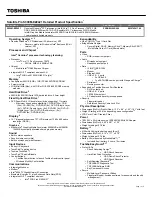
120
Chapter 9: Travel Tips
www.gateway.com
Modem
■
Take a telephone cord to connect the modem to telephone jacks. If you
are traveling internationally, take telephone jack adapters or an acoustic
handset coupler.
■
Take a telephone line protector.
■
Take a telephone line tester to check for unsafe lines, especially if you
are traveling internationally.
■
Take remote access information with you so you can connect to your ISP
while outside of your usual calling area. A list of country dialing codes
may be especially useful if you are traveling internationally.
■
Download entire Web sites that you frequently visit for off-line viewing
if you will be traveling for extended periods without access to an Internet
connection.
Radio frequency wireless
connections
■
Every country has different restrictions on the use of wireless devices. If
your system is equipped with a wireless device, when traveling between
countries with your system, check with the local Radio Approval
authorities prior to your trip for any restrictions on the use of a wireless
device in the destination country.
■
If your system came equipped with an internal embedded wireless device,
see “Safety, Regulatory, and Legal Information” on page 215 for general
wireless regulatory guidelines.
■
Wireless communication can interfere with equipment on commercial
aircraft. Current aviation regulations require wireless devices to be turned
off while traveling in an airplane. IEEE 802.11b (also known as wireless
Ethernet or Wifi) and Bluetooth communication devices are examples of
devices which use wireless to communicate.
Solo1200.book Page 120 Friday, May 25, 2001 10:48 AM





































